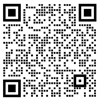
Microsemi announced the availability of the smallest radio module it has produced. The ZL70323 measures only 5.5mm x 4.5mm x 1.5mm and is optimized for implantable medical devices such as pacemakers, cardiac defibrillators and neurostimulators. The new module replaces the company's ZL70321 and supplements the ZL70120 radio module for external device controllers. Both modules are based on Microsemi's industry-leading ultra-low-power (ULP) ZL70103 radio transceiver chip, which supports ultra-high data rate radio frequency (RF) links for medical implantable communications applications.
"Our radio modules enable medical device companies to focus more research funding and development efforts on new therapies that can improve quality of life. According to Martin McHugh, Microsemi's new module product line manager, the reduction in size makes it easier for companies to design more Small equipment, which requires smaller incisions, which helps patient comfort and reduces the risk of infection. "RF engineering is a highly specialized discipline that leverages our deep expertise in this area and also enables our Customers reduce design time, reduce time to market, and minimize project risk. "
RF technology is increasingly used in a variety of implantable medical applications, including heart health, physiological monitoring (such as insulin), pain management, and obesity treatment. According to Roots Analysis Business Research & Consulting, by 2017, worldwide Sales of the neurostimulation device market are expected to reach $ 6.5 billion, with
a compound annual growth rate (CAGR) of 17.9% from 2011 to 2017. The ZL70323 implantable module implements all the RF-related functions needed to deploy wireless stimulation devices .Implanted nodes in the Medical Implantable Communication Services (MICS) RF telemetry system. The integrated antenna tuning circuit allows the module to be used with various implantable antennas (nominal antenna impedance is 100 + j 150ohm).
This module provides the following main modules: 1 – ZL70103-based MICS band RF transceiver with integrated matching network, surface acoustic wave (SAW) filter to suppress unnecessary blocking, and antenna tuning; 2 – 2.45GHz wake-up reception Machine matching network; 3-integrated 24MHz reference frequency crystal; and 4-decoupling capacitors and series termination resistors. Microsemi's ZL70103 series enables rapid transmission of patient health and device performance data with little impact on the battery life of implanted devices. The device operates in the 402-405MHz MICS band. Supports multiple low-power wake-up options, including wake-up reception options using ULP 2.45GHz industrial, scientific and medical (ISM) bands.
The new ZL70323 radio solution is available now. The company also offers application development kits (ADK) to qualified customers.
 0
0












 Login/Register
Login/Register
 BOM
BOM
 Cart
Cart

